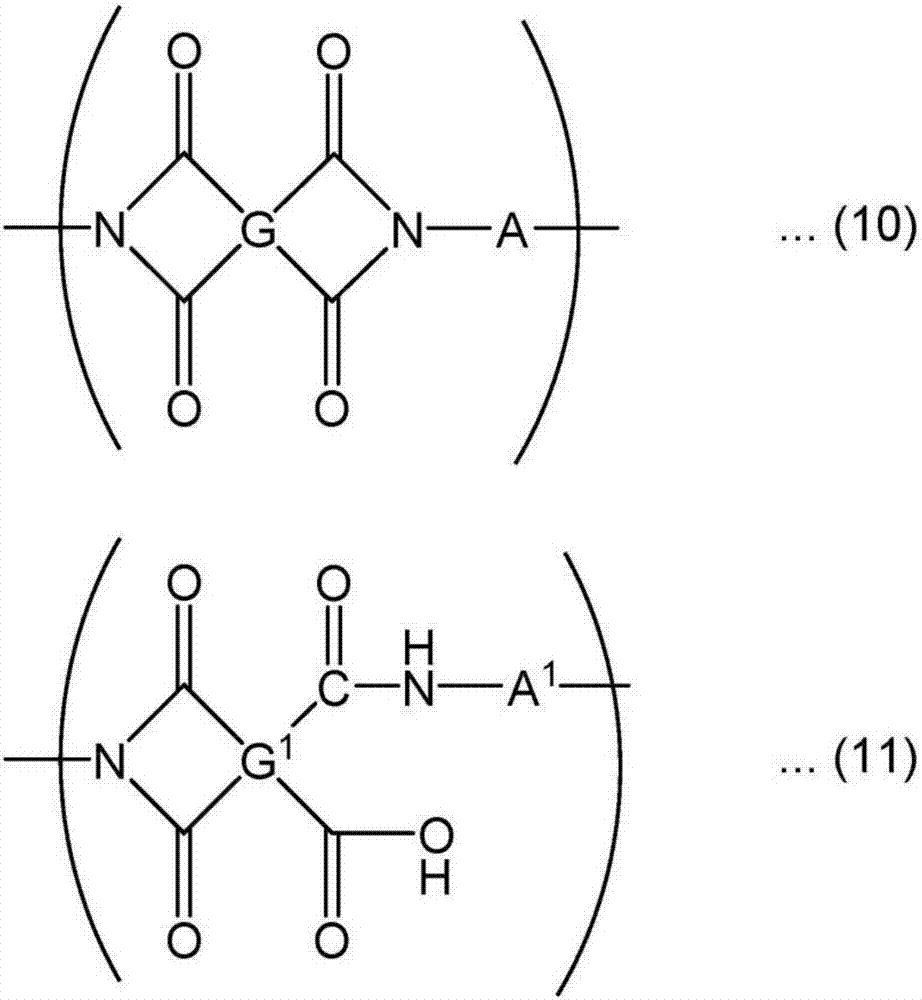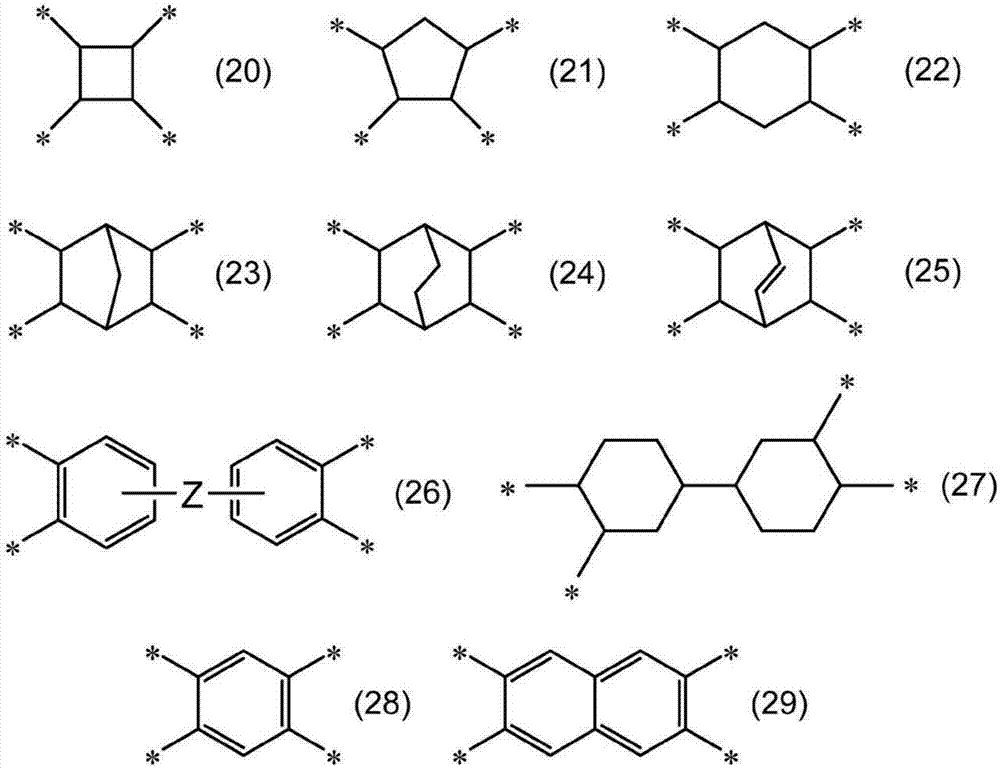Optical film and optical member using optical film
A technology of optical film and depth, which is applied in the field of optical film and optical components, can solve the problems of non-material, easy-to-break glass, etc., and achieve the effect of reducing yellowness and low yellowness
- Summary
- Abstract
- Description
- Claims
- Application Information
AI Technical Summary
Problems solved by technology
Method used
Image
Examples
Embodiment 1
[0122] A polyimide-based polymer ("Neoprim C-6A20-G" manufactured by Mitsubishi Gas Chemical Co., Ltd.) having a glass transition temperature of 390° C. was prepared. A γ-butyrolactone solution (solution viscosity: 108.5 Pa·s) with a polyimide-based polymer concentration of 22% by mass, and silica particles with a solid content concentration of 30% by mass dispersed in γ-butyrolactone The dispersion and the dimethylacetamide solution of the alkoxysilane having an amino group were mixed and stirred for 30 minutes to obtain Varnish 1 as a mixed solution. The mass ratio of silica particles to polyimide-based polymers is 30:70, and the amount of alkoxysilanes having amino groups is 1.67 per 100 parts by mass of the total of silica particles and polyimide-based polymers. parts by mass.
[0123] (film making)
[0124] The varnish 1 prepared by the above method was casted on a PET film (A4100 manufactured by Toyobo Co., Ltd.: the arithmetic mean hei...
Embodiment 2
[0126] By the same formulation as in Example 1, a varnish 2 was prepared using a different Neoprim solution (concentration 22.3% by mass, solution viscosity 89.8 Pa·s) on the day of manufacture, and the varnish 2 made was coated on a PET film (Toyobo Co., Ltd. A4100 manufactured by the company: surface arithmetic mean height Sa=4.2nm) was cast and film-formed, heat-treated at 50° C. for 30 minutes, and heat-treated at 140° C. for 10 minutes to obtain a polyimide-based polymer film. The obtained polyimide-type polymer film was peeled off from a PET film, and it heat-processed at 210 degreeC for 1 hour further in nitrogen gas. The obtained polyimide-based polymer film had a thickness of 50 μm and a refractive index of 1.57.
[0127] In the obtained polyimide-based polymer film, YI was different from that of Example 1 due to the slight color difference of the polyimide.
Embodiment 3
[0144] A polyimide (KPI-300MXF(100) manufactured by Kawamura Sangyo Co., Ltd.) was prepared. This polyimide was dissolved in a 9:1 mixed solvent of N,N-dimethylacetamide and γ-butyrolactone, and 0.8 parts by mass of Sumika was added to 100 parts by mass of the polyimide. Sumisorb 350 manufactured by Chemtex Co., Ltd. was used as a UV absorber to prepare varnish 3 (concentration of polyimide: 17% by mass). This varnish was cast on a PET film (A4100 manufactured by Toyobo Co., Ltd.: arithmetic mean height Sa=4.2 nm) as a base material, and heat-treated at 50° C. to 70° C. for 60 minutes. The formed transparent resin film was peeled from the PET film, and the peeled transparent resin film was heated and dried at 200° C. for 40 minutes in the air atmosphere. The thickness of the film was 79 μm, and the refractive index was 1.56.
[0145] [Table 1]
[0146]
PUM
| Property | Measurement | Unit |
|---|---|---|
| depth | aaaaa | aaaaa |
| diameter | aaaaa | aaaaa |
| particle size | aaaaa | aaaaa |
Abstract
Description
Claims
Application Information
 Login to View More
Login to View More - R&D
- Intellectual Property
- Life Sciences
- Materials
- Tech Scout
- Unparalleled Data Quality
- Higher Quality Content
- 60% Fewer Hallucinations
Browse by: Latest US Patents, China's latest patents, Technical Efficacy Thesaurus, Application Domain, Technology Topic, Popular Technical Reports.
© 2025 PatSnap. All rights reserved.Legal|Privacy policy|Modern Slavery Act Transparency Statement|Sitemap|About US| Contact US: help@patsnap.com



